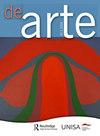Rock Art in Makumbe Cave: Disentangling Visual Layers
IF 0.1
0 ART
引用次数: 0
Abstract
Abstract Makumbe Cave, located in the Chinamhora Communal Lands in Eastern Mashonaland, Zimbabwe, was designated a national monument in 1949. The shelter housed a rich display of intricate paintings, with one panel reportedly stretching across ten metres of the granite wall. Visitors to the site observed that this particular frieze consisted of a palimpsest of paintings rendered in different styles and painted using different colours. The superimposition of the various layers was interpreted to have chronological significance, which generated local and international interest in the paintings. In 1929, when the paintings were still visible, a research expedition led by Leo Frobenius visited Makumbe to copy the paintings. Today, a build-up of carbon from fires lit within the cave has formed to create the most recent layer in the history of the site, in effect completely hiding the paintings from view. In this article I rely on archival documents and historical copies generated from the early engagements with Makumbe to unveil the paintings and tell their story.Makumbe洞穴的岩石艺术:解开视觉层次
马库姆贝洞穴位于津巴布韦东部马绍纳兰的Chinamhora公有土地上,于1949年被指定为国家历史遗迹。庇护所里陈列着丰富的复杂绘画,据报道,其中一幅画横跨了10米长的花岗岩墙。参观现场的游客注意到,这个特殊的楣板由不同风格和不同颜色的绘画重写组成。不同层的叠加被解释为具有时间意义,这引起了当地和国际上对这些画的兴趣。1929年,当这些画还能看到的时候,由Leo Frobenius带领的一个研究考察队访问了Makumbe,并复制了这些画。今天,洞穴内燃烧的碳已经形成,形成了该遗址历史上最新的一层,实际上完全隐藏了画作。在这篇文章中,我依靠档案文件和早期与Makumbe合作产生的历史副本来揭开这些画作并讲述它们的故事。
本文章由计算机程序翻译,如有差异,请以英文原文为准。
求助全文
约1分钟内获得全文
求助全文

 求助内容:
求助内容: 应助结果提醒方式:
应助结果提醒方式:


